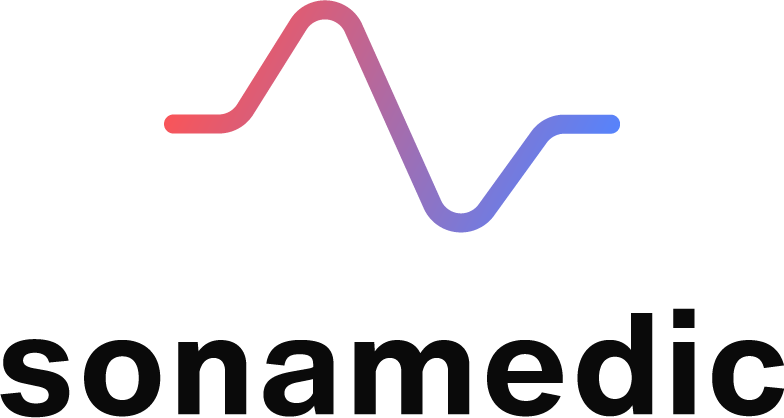It is often not so easy to find peace and quiet in the hectic pace of everyday life! Once we have a moment to ourselves, the sudden deceleration is a challenge for many people, which can be associated with uncomfortable feelings such as inner restlessness and nervousness. Why is this so? Quite simply because in these situations we are often still on the accelerator internally and the biochemistry of our body is programmed to “continue”. The good news is that with the right relaxation techniques you can access proven tools that will reliably help you to reduce stress and tension. This way you can train your body and mind to sink into deep states of rest and recharge your batteries!
Here are five relaxation tools with which you can create your own inner comfort zone:
1. Switch easily to relaxation using breathing exercises
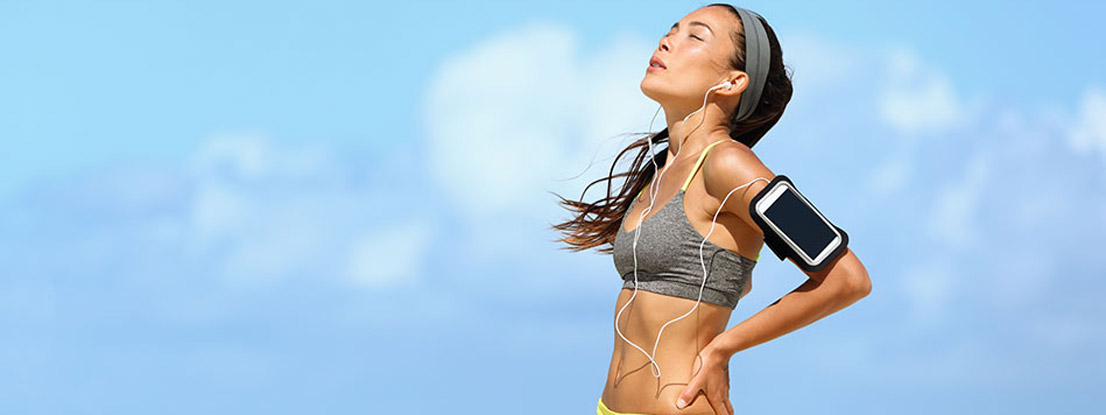
You know the situation: in stressful situations, when you are scared and excited, you breathe “automatically” shallow and hectic. The focus is on inhalation – and that’s exactly the problem when tension has become a permanent condition. After all, this kind of breathing continues to stimulate your sympathetic nervous system, the part of your nervous system that raises your pulse, blood pressure and heart rate and can turn you into a real nervous wreck.
A society that has forgotten to exhale
In our high-speed life, the hasty gasping for air has long become a normal state of affairs for many people – normally we only take more time to exhale on our own when we are not under time pressure and feel comfortable, safe and secure. This is exactly where a trick comes into play that people have actually known for thousands of years: The mechanism that adjusts your breathing to your inner emotional state also works the other way round! So if you learn to bring your breath into a relaxed rhythm with specific exercises, your brain simply can’t help it – it receives the message that you are totally relaxed and must then switch the entire biochemistry of your body to relaxation!
Find breathing exercises that suit you: yoga techniques
There are many techniques that you can try out to consciously control your breath. The best known are the pranayama exercises from yoga, which not only aim at relaxation, but according to the yogic teachings, at controlling the life energy, prana. The breathing techniques of yoga, such as alternating or fire breathing, are very effective, but also demanding in technique. Therefore it is best to learn them from a professional.
Breath physiotherapy and simple breathing exercises
If you suffer from respiratory tension, it may also be a good idea to rely on experts: Let a respiratory physiotherapist who knows what is important guide you in your exercises. You can also teach yourself simple, self-taught methods such as the “4:6 breathing exercise”, which involves breathing in for 4 seconds and breathing out for 6 seconds.
The right breathing makes you optimistic
There are many studies that prove that breathing exercises can have a relaxing and healing effect! For example, Swedish and Norwegian researchers at the Universities of Karlstad and Oslo have shown that the yogic breathing technique “Sudarshan Kriya” has been shown to reduce anxiety and oppressive feelings and increase well-being in 55 adults. While not much changed in the emotional state of the control group, who did not do any breathing exercises during the six-week experiment and instead relaxed in a comfortable armchair, things were different in the “Surdashan Kriya” team: The participants clearly rated their own emotional state as more optimistic and fearless than at the beginning of the therapy [1].
With breath work against depression
Impressive: in 2017, scientists led by psychiatry professor Chris Streeter from Boston University School were able to show that breathing exercises also benefit people who are not only usually stressed but also suffer from tangible, diagnosed depression. In addition to a daily yoga session, the participants in the study practised the technique of “coherent” breathing, in which air is taken only 5 times a minute. In this way, the researchers wanted to activate the patients’ inner “task force” for relaxation and anxiety reduction – the parasympathetic nervous system. And indeed: after twelve weeks of yoga and breathing therapy, all test persons were significantly better than at the beginning of the experiment! In the “high-dose group”, which had trained a little more, the depression was not even detectable by the usual diagnostic criteria [2].
2. Send yourself on a fantasy journey
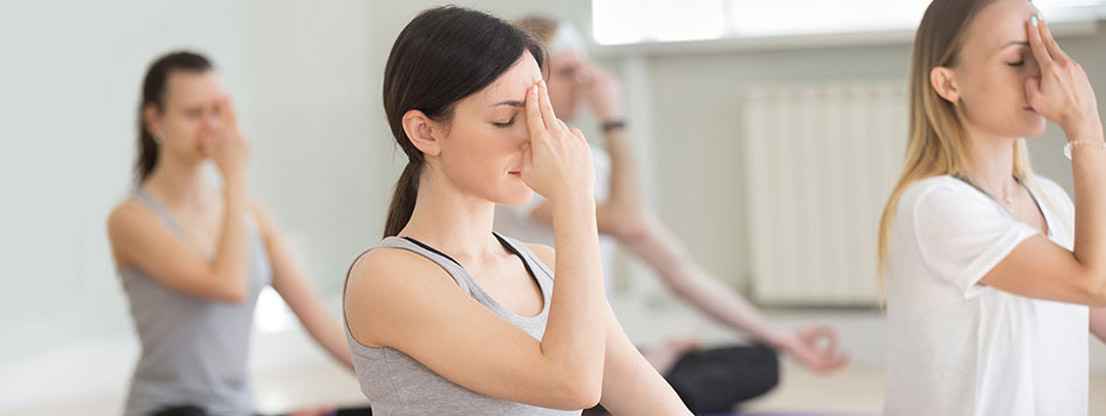
The power of visualisation
Fantasy journeys can help you to relax by creating strengthening inner images. Crystal clear mountain lakes, idyllic summer meadows, white sandy beaches – nature scenes like these have been proven to calm your nervous system and help you regenerate. In addition, the mental short trips often have symbolic character and work with autosuggestion. Before exams, for example, you can visualise yourself mastering a jump from a five-metre board in a confident and elegant manner and feeling completely in your element!
The safe place within yourself
Psychotherapy has been using the healing potential of the fantasy journey for many decades: For example, trauma and anxiety patients are encouraged to create a safe place for themselves through a pleasant inner narrative, which is worked out together with the therapist. They can retreat there by the power of thought whenever things are emotionally precarious or an inner breathing space is needed.
More than just nice stories – fantasy journeys convince in scientific studies
Science has long proved that fantasy journeys are more than just nice stories about palm bays and lonely islands: Already in 2008, a meta-study in the “International Journal of Neuroscience” summarised numerous experiments on this topic. According to this study, imaginary trips to pleasant worlds not only demonstrably reduce stress, but also improve the activity of the immune system, for example by increasing the number of defence cells in the blood [3].
Fantasy trips can be superior to painkillers
In a Norwegian study, it was shown that fantasy journeys can even relieve pain in fibromyalgia – in fact, the imaginations that distracted patients from their pain through beautiful settings and plots were more effective than the painkiller amitriptyline, which was administered to a control group!
And fantasy journeys can do even more: In hemiplegic stroke patients who visualised movements three times a week for six weeks, the length of the steps and the time spent on the affected leg could be increased. By visualising movement alone, the fantasy travellers improved their walking speed by an average of 40 % [5].
3. Try progressive muscle relaxation
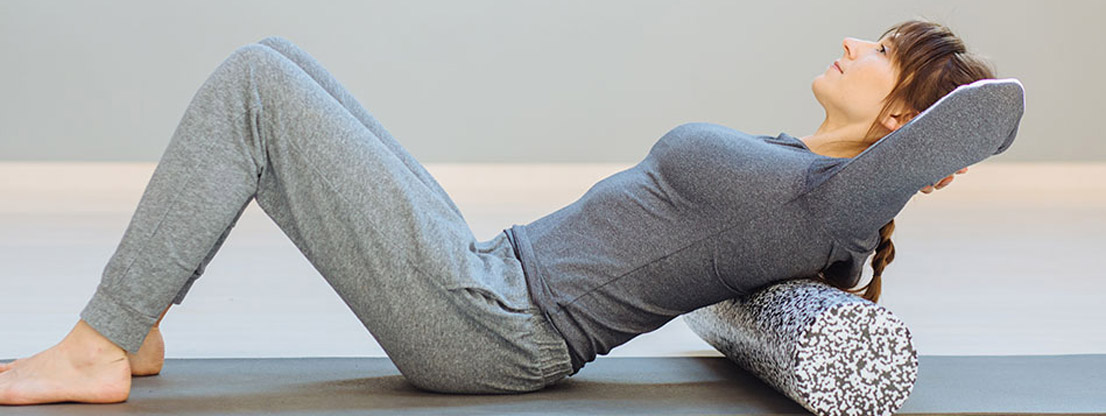
Progressive muscle relaxation is a relaxation method invented by the US-American doctor Edmund Jacobson. It involves tensing individual muscle groups strongly over a period of 7 to 10 seconds – and then letting go quite deliberately. Jacobson found that people who are under stress often do not even notice how tense they actually are. However, a chronically tense muscle, which you no longer notice as such, cannot be relaxed on purpose either. This is where Jacobson’s progressive muscle relaxation can help!
Train conscious letting go through conscious tension
The trick that Jacobson used was simple – but ingenious: by deliberately tensing the arm or back, for example, he made his patients receive the clear and strong signal of “contracted muscle”. In the next step, it was then much easier for them to relax their body little by little, muscle group by muscle group, more and more completely.
Hello, brain! Or: How your muscles communicate with your nervous system
What Jacobson also found out: Not only stubborn tensions could be treated with his new method – also mental states of excitement and psychosomatic complaints could be improved in an impressive way! Because similar to the respiratory therapy, the reverse is also true here: If we automatically tense our muscles when under inner stress, we can – thought the other way round – also influence our mood by consciously relaxing our muscles. This mutual cross-connection, which Jacobson was the first to discover, is used today in a variety of body therapy approaches.
Progressive muscle relaxation can have the same anxiety-relieving effect as diazepam
Really true: Jacobson’s relaxation technique can be just as fear-relieving as the psychotropic drug diazepam! In one study, his technique significantly reduced anxiety in patients about to undergo surgery, and just as well as the drug [6].
The improvements achieved by progressive muscle relaxation in trials also show how many different levels relaxation affects. Among other things, psychological abnormalities have been reduced, cognitive performance has improved, pain has disappeared and blood pressure has been permanently lowered [7].
How to practice progressive muscle relaxation?
Progressive muscle relaxation is easy to try out at home with step-by-step instructions or video and audio tutorials. If you prefer to practise together with others, health insurance companies and adult education centres also offer courses with relaxation experts.
4. The classical way to relax with autogenic training
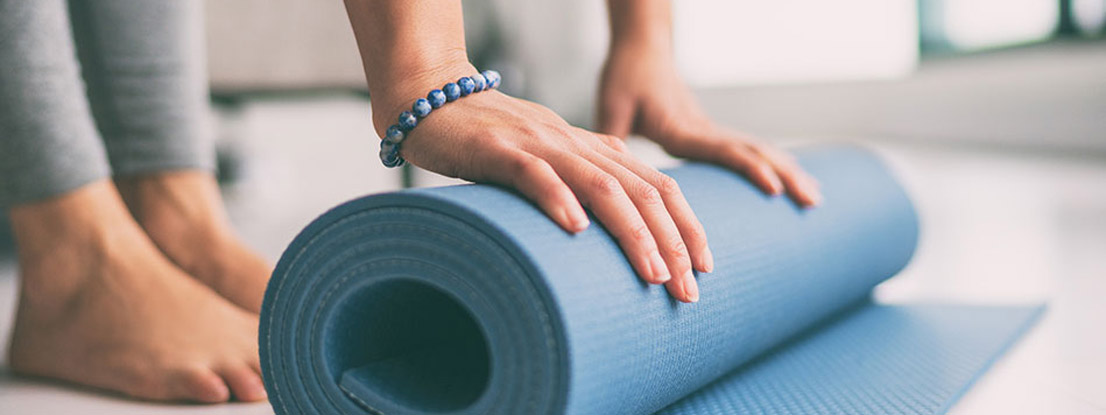
Autogenic training and its origin
Autogenic training is sometimes called the “Yoga of the West” – and is the absolute classic among relaxation techniques in Germany! The Indian influence cannot be denied: The developer of autogenic training, the German psychiatrist and psychotherapist Johannes H. Schultz, had attended the courses of the first German yoga school in Berlin in the 1920s, which were already considered quite “hip” at that time.
A new relaxation method, compatible with western conventional medicine
Impressed by the interactions between body and mind, which the psychiatrist observed both in yoga exercises and hypnosis therapy, Schultz set about developing his very own relaxation method. His plan: He wanted to establish a therapeutic concept based on the power of thought, but independent of religious or esoteric world views. This new “concentrative self relaxation” should be scientifically provable from the beginning and compatible with modern orthodox medicine.
Step by step into deep relaxation
Actually, autogenic training is a kind of self-hypnosis that works with autosuggestion. First, you learn to create a feeling of heaviness and warmth with thoughts in your right arm, which then spreads to your whole body all by itself. You will soon be able to harmonise your breath and heartbeat via Mindpower. You imagine your stomach as “flowing warm”, your forehead as “pleasantly cool”. This fixed scheme is supplemented by “formulaic resolutions”, i.e. positive affirmations, which you can adapt to yourself and your life situation. If you have anxiety problems and are often pessimistic about the future, such a resolution could be, for example: “I am courageous and look forward to my life”.
“My right arm is all warm” – imagination or fact?
After several weeks of practice the processes are automated: In contrast to the beginning of your training, when you had to learn autosuggestion, your arm now immediately feels warm and heavy when you speak your inner phrases. But is this perhaps just a pleasant illusion? Research says: No! On the physical side, there are correspondences that go hand in hand with the altered sensation and that can be scientifically verified. For example, the sensation of heaviness correlates with a measurable relaxation of your arm muscles; the sensation of warmth, on the other hand, is caused by a change in blood flow and can be easily verified by measuring a change in skin temperature [8].
Autogenic training helps against many diseases and improves the quality of life
But scientists have not only studied what happens in your body immediately when you make it warm and heavy in your mind. Many trials have also looked at the impact of autogenic training on illness and quality of life, and two meta-analyses were done in 1998 and 2015. The result: concentrative self relaxation helps! – For example, in high blood pressure, asthma, bowel problems, anxiety symptoms and sleep disorders [9], cardinal syndrome X and in improving the quality of life of people with MS [10].
5. Experience binaural beats and slide into relax mode via headphones

Binaural beats are a relatively young relaxation method that works with acoustic stimuli and lets you simply slide into relax mode via headphones. The trick: two different frequencies are played to your right and left ear. Your brain reacts promptly – by letting you hear a phantom tone that it has generated itself, which is the middle frequency between the two sounds. This auditory illusion changes your brain waves[11] by making them vibrate at frequencies that are typical of relaxation or concentration, for example. Binaural beats are therefore a gentle sound therapy that can help you to go through your day calmly, attentively and without fear.
The right frequency against stress, fear and pain with audio programmes from sonamedic
A meta-analysis comes to the conclusion that binaural beats can be effective not only against stress but also against anxiety and can be used in pain management. [12] In order for the beats to have their full healing effect on you, they are not used “purely” in sonamedic sound journeys, because some people perceive the sounds as a humming sound. Embedded in soothing music, you do not perceive them at all on a conscious level and only notice that you gradually relax deeper and deeper.
Improve your long-term memory with binaural beats
Binaural beats can not only be a simple tool to switch off better and reduce stress. When used correctly, they also have the potential to help your brain work more effectively! For example, if you use binaural beats to vibrate at the right frequency, it can improve the performance of your long-term memory. One experiment showed that people who were exposed to binaural beats at a beta frequency had better memory than those in the control group. Background of the experiment: The participants were asked to remember certain words and repeat them [13] If you would like to know more about the origin and effect of binaural beats and the mental states associated with the different frequencies, you can find our information here!
Tip: sonamedic frequency therapy – help through hearing
sonamedic frequency therapy is an easy way to integrate healing moments of relaxation into your everyday life without a course, teacher, book or long practice of exercises. All you have to do is put on the headphones, lean back and listen! We have combined elements of the proven relaxation techniques that you have learned earlier in the text into one listening experience:
Binaural beats are the central element of our sound journeys. They let your brain trigger frequencies that have a relaxing effect and strengthen your attention and concentration.
Positive autosuggestions help you to anchor healing thoughts and beliefs in your subconscious. In this way you can inspire yourself and realign your inner compass. Fantasy journeys optionally form the narrative framework of your sound journey. Our storytelling helps you to use your imagination to create inner places where you feel comfortable and safe. Harmonious images of nature have a calming effect on your nervous system. Positive suggestions strengthen your self-confidence.
Progressive muscle relaxation is integrated into our optional narrative settings through small tension and relaxation exercises. Not only can these teach you to let go at the muscular level, but you will also benefit from the resulting brightening of your mood beyond your sound journey.
Breathing exercises that get you in the right mood for your speech-accompanied sound journey will calm your body and activate your parasympathetic nervous system. Through conscious breathing you free yourself from everyday stress, regenerate biochemically and charge yourself with new energy!
Scientific sources
(1) Kjellgren, Bood, Axelsson, Norlander, Saatcioglu (2007): Wellness through a comprehensive Yogic breathing program – A controlled pilot trial. Online (Zugriff 16. Mai 2019)
(2) Streeter, Gerbarg, Whitfield, Owen, Johnston, Silveri, Gensler, Faulkner, Mann, Wixted, Hernon, Nyer, Brown, Jensen (2017): Treatment of Major Depressive Disorder with Iyengar Yoga and Coherent Breathing: A Randomized Controlled Dosing Study. Online (Zugriff 16. Mai 2019)
(3) Trakhtenberg (2008): The effects of guided imagery on the immune system: A critical review. In: International Journal of Neuroscience Nr. 6, Juni 2008, S.839-855.
(4) Fors, Sexton, Gotestam (2002): The effect of guided imagery and amitriptyline on daily fibromyalgia pain; a prospective, randomized, controlled trial. In: Journal of Psychiatry Research 36 (3), Mai / Juni 2002, S. 179-187.
(5) Dunsky, Dickstein (2008): Home-based motor imagery training for gait rehabilitation of people with chronic post stroke hemiparesis. In: Archives of Physical Medicine & Rehabilitation Nr. 8, August 2008, S. 1580 ff.
(6) Pifarr et al (2015): Diazepam and Jacobsons’s progressive relaxation show similar attenuating short-term effects on stress-related brain glucose consumption. In: European Psychiatry, Februar 2015, S. 187192.
(7) Sheu et al (2003): Effects of progressive muscle relaxation on blood pressure and psychosocial status for clients with essential hypertension in Taiwan. In: Holistic Nursing Practice, Januar / Februar 2003, S. 41-47.
(8) Mann, Steter (1982): Thermographische Befunde beim autogenen Training in Abhängigkeit von der Tagesperiodika. In: Therapiewoche 1982, S. 2232-2238.
(9) Steter, Kupfer (1998): Autogenes Training – Qualitative Meta-Analyse kontrollierter klinischer Studien und Beziehungen zur Naturheilkunde. Online (Zugriff 16. Mai 2019)
(10) Bregenzer (2015) Wirksamkeitsnachweis und Indikationen des Autogenen Trainings – eine Metaanalyse nach den Cochrane Kriterien. Online (Zugriff 16. Mai 2019)
(11) Schamber, Meinicke, Schäfer (2015): Stressreduktion durch Binaurale Stimulation? Eine experimentelle Untersuchung zum Effekt einer Alpha-Stimulation auf die psychophysiologische Entspannungsreaktion. In: Zeitschrift für Neuropsychologie, 26 (4), S.239-248.
(12) Garcia-Argibay, Santed, Reales (2018): Efficacy of binaural auditory beats in cognition, anxiety, and pain perception: a meta-analysis. Online (Zugriff 16. Mai 2019)
(13) Garcia-Argibay, Santed, Reales (2017): Binaural auditory beats affect long-term memory. Online (Zugriff 22. Mai 2019)
